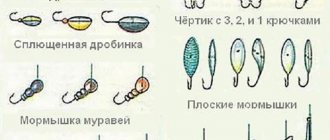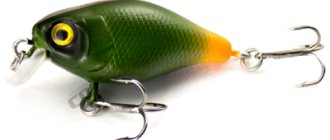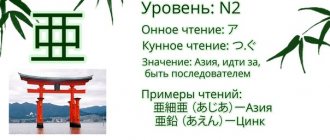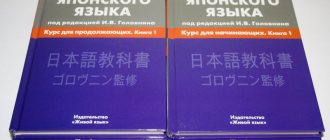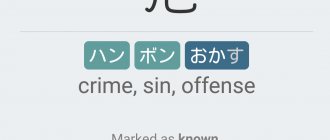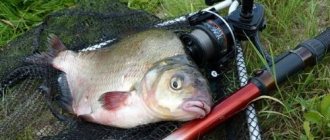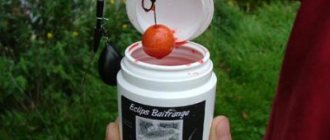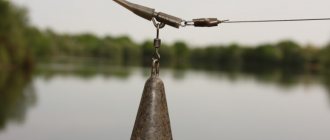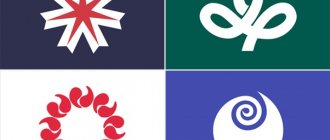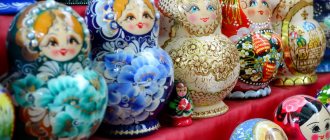Tokyo in Japanese
Oh wait, you could also write it like this.
And finally, this is also an option.
Yes it's true. The Japanese language has three very different sets of characters called kanji, hiragana and katakana, which are used in reading and writing. The first image of "Tokyo" is written in kanji, followed by the hiragana version, and below is katakana.
Hiragana and Katakana. Japanese syllabary
The reason for this triple threat to language learners' sanity is not because Japanese teachers want to reduce their workload by convincing you to study Spanish instead. There's actually a pretty logical, slightly lengthy explanation for using all three, so pour yourself a cup of green tea and let's dive right into the explanation
First, let's look at kanji, which are complex characters that originally came from the Chinese language. Kanji are ideograms, meaning each character has its own meaning and corresponds to a word. For example, "kuruma" , the Japanese word for "car", is written in kanji as車.
▼車!
Itashi's capital in the Akihabara UDX garage.
Hiragana, however, is much simpler in both form and function. They require fewer strokes to be written than other characters except the simplest kanji.
Kanji (漢字). Kanji
In modern Japanese, kanji are used to write the stems of nouns, adjectives and verbs, while hiragana is used to write inflections and endings of verbs and adjectives, particles and words whose characters are difficult to remember.
In other words, Hiragana characters function like English letters, in the sense that they have no intrinsic meaning. They simply represent sounds.
Because of this, any Japanese word that can be written in kanji can also be written in hiragana. Kuruma, which we have seen written in kanji as車, can also be written in hiragana as "くるま", with these three hiragana corresponding to the sounds ku, ru and ma.
To record native Japanese words, the Man'yōgan writing system was created in the 6th–7th centuries. The words in it were written in Chinese characters according to their sound, not their meaning. Man'yogana, written in cursive script, evolved into hiragana, a writing system for women.
36 Famous Japanese Proverbs and Words of Wise
Stroke order
From the very beginning of studying, pay attention to the correct order and direction of the lines to avoid bad habits. Often students don't see the point in stroke order if the result is the same. But what they miss is that there are thousands of characters and they are not always written as carefully as they appear on print. The correct stroke order helps you recognize hieroglyphs, even if you write quickly or by hand.
The simplest symbols called radicals
, are often used as components of complex symbols. Once you learn the stroke order of the radicals and get used to the principle, you will find that it is not difficult to guess the correct order for most kanji.
Most often, strokes are applied from the upper left corner to the lower right. This means that horizontal strokes are usually drawn from left to right, and vertical strokes are usually drawn from top to bottom. In any case, when you are in doubt about the stroke order, consult a Kanji dictionary.
Kanji and Hiragana
So why do sentences have a mixture of kanji and hiragana? Because hiragana is used for grammatical particles and modifiers. Remember that each character represents a meaning, not a sound. So when writing a verb, you use kanji for the base concept and then hiragana to change the pronunciation and add more meaning, such as tense.
For example, the verb miru , meaning "to see" , is written見る, combining the kanji 見 (read mi) with the hiragana る (ru). If you want to change it to the past tense, mita, you should leave the kanji as is and replace る with hiragana た (ta) to get見 た, which means "saw" .
But wait, if everything that can be written in Kanji can also be written in Hiragana, why not just use Hiragana? After all, while the full set of 46 hiragana is larger than the 33-letter Russian alphabet, it is still much more manageable than the 2,000 or so common kanji, knowledge of which serves as the litmus test for complete adult Japanese literacy.
Japanese uses between 3000 (99% coverage) and 4500 (99.9% coverage) characters, but the most popular 2000 characters make up 96% of all characters in the text. To speak Japanese well, you need to know about 2500–3500 kanji. The school covers 2136 kanji.
Tools and materials used in Japanese calligraphy
In ancient times, people had to make their own instruments to practice Shodo, but nowadays things have changed.
Now you can find all the necessary accessories in our store. Modern technologies allow you to order everything you need online, and in a short period of time you can try your hand at Japanese calligraphy.
Now let's look at what exactly a Shodo calligraphy set should consist of.
The four most basic instruments have been collectively called the four treasures of the scientist:
So, the first treasure - the Brush - was usually made from animal hair... or from the hair of small children (they said that such brushes brought good luck in imperial exams).
Modern brushes are made mainly from goat, wolf, rabbit, weasel hair, or a combination of them.
The hair is painstakingly sorted by softness, hardness, thickness and length. Real, professional brushes are assembled by hand.
Different brushes are used for different styles of calligraphy and writing.
Washi paper (和紙, washi) is Japanese paper . It is made from fibers from the bark of the gampi tree through a long and complex process. Cheaper grades of paper can be made from bamboo, hemp, rice and wheat.
Washi paper is characterized by its uneven texture and white color.
This paper is also so durable that it was used to make various everyday items such as clothing, household items, toys, as well as robes and ritual items for priests and Buddha statues. And during World War II, washi paper was used to make shells for bomber balloons launched across the Pacific Ocean to the United States.
Nowadays, washi is used mainly for Japanese calligraphy.
The third jewel of a scientist is Mascara. Japanese calligraphy and painting traditionally use hard, dry ink.
Mascara is made mainly from soot and animal glue, sometimes with the addition of incense.
In order to make mascara, you need to grind the mascara stick and mix it with a small amount of water to get a dark liquid. Artists and calligraphers can vary the concentration of the resulting ink depending on their preferences by decreasing or increasing the amount of dry ink or water.
The ink stone is the fourth jewel of the scientist; it is used for grinding hard carcass.
Despite the name ink stone, ink stones can be made from materials other than stone, such as porcelain, metal, wood, etc. In noble houses one could find very expensive devices made of crystal, jade, various precious stones, gold and silver.
Arguments against
There are actually three pretty good arguments against writing exclusively in hiragana.
- Since kanji were developed before hiragana, writing with kanji usually commands respect for an intelligent and mature author . Of course, you can write "kuruma " asくるまand be understood, but this will look childish ("collective farm") to Japanese readers , so educated adults should write車.
- However, if everyone in Japan did this, eventually the stigma of being a stupid hillbilly (or child) when using only hiragana would disappear. It's just as if humanity has collectively decided that, starting tomorrow, chocolate milk is a perfectly acceptable drink to serve at formal business meetings.
Proverbs and sayings of Japan.
Japanese calligraphy today
Today, one of the leading associations in the field of Japanese calligraphy is the Association of Masters of Modern Calligraphy, which was founded in 1948.
In modern Japan, Shodo is a popular class for elementary schools. Many parents believe that children's determination and stillness while practicing calligraphy develop useful skills. In high school, calligraphy is one of the arts subjects, along with music or painting.
Some universities, such as the University of Tsukuba, Tokyo Gakugei University, and Fukuoka University of Education, have dedicated calligraphy departments that emphasize teaching programs in Shodo calligraphy.
Writing difficulties
The Japanese language has a very limited number of sounds. Besides the fact that it does not have an "L", very few consonants can be mixed together, and each syllable must end with a vowel or N. Because of this, the Japanese language is filled with words that are pronounced the same but have different meanings.
In fact, there are so many homonyms that without kanji it's hard to tell which one you're talking about. Of course, you could write " koutai " in hiragana asこたたい, but "koutai" can mean "replacement", "antibody" or "retreat". Because of this, if you want to get your point across, you're much better off using the kanji, 交代, 抗体, or 後退 to clarify which kotai you're writing about.
- Japanese writing generally does not put spaces between different words. It sounds like it could turn every sentence into a confusing mass of frozen language fragments , but written Japanese tends to fall into patterns in which kanji and hiragana alternate, with kanji forming the base vocabulary and hiragana giving them grammatical context.
For example: “Watashi ha kuruma wo mita,” or “I saw a car,” written with the usual mixture of kanji and hiragana.▼
Right away we can see the kanji-hiragana-kanji-hiragana-kanji-hiragana pattern, which quickly tells us that we have three main ideas in the sentence.
- 私は: Watashi (I) and ha (subject marker)
- 車を: kuruma (car) and wo (object marker)
- 見た: mi– (verb “to see”) and – ta (marking the verb as past tense)
Without the combination of kanji and hiragana, these breaks would be much more difficult to detect. This is what it would look like in hiragana only.
▼ Writing all text in Hiragana also takes up much more space.
Suddenly it becomes much more difficult to tell where one idea ends and another begins, since it is all one continuous thread of hiragana. Trying to read something written only in hiragana is like trying to read “ solid text with no spaces .”
However, the rhythm that comes from combining kanji and hiragana makes written Japanese a clear way to communicate ideas rather than a mad dash to the finish line.
Katakana
Katakana is used to write onomatopoeia and gairaigo (loan words). The use of katakana to write loanwords is relatively recent: before World War II, loanwords were usually written in kanji either by the meaning of the characters (煙草 or 莨 tabako "tobacco") or by their phonetic sound (天婦羅 or 天麩羅 tempura). The second use is called ateji.
The table below shows some simple and commonly used kanji with pictures to aid memorization. The meaning of each symbol and the pronunciation of the words are given.
▼ They may have several readings; only the most common one is shown here.
Katakana arose in parallel: monastery students simplified man'yogana to a single meaningful element. Both of these writing systems, hiragana and katakana, derived from Chinese characters, later developed into syllabaries, collectively called kana.
To be continued:
Why does Japanese writing require three different sets of characters? (Part 2)
31 WISE THOUGHTS FROM JAPAN.
Views: 331
Share link:
- Tweet
- Share posts on Tumblr
- Telegram
- More
- by email
- Seal
Liked this:
Like
